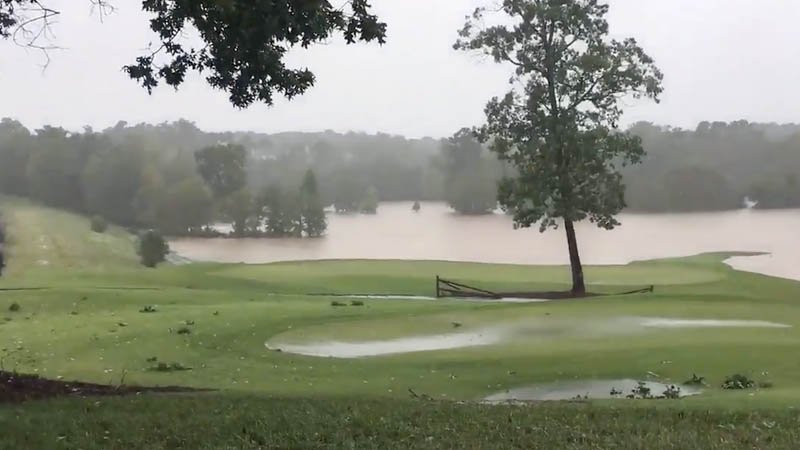
Hurricane-related damage on golf courses is not always about wind damage and uprooted trees. Excessive rain and prolonged exposure to floodwater can be the real culprits, especially in a year already defined by weather challenges.
North Carolina State and Clemson University have produced a hurricane-preparedness guide to help golf course superintendents recover from events like Hurricane Florence that dumped more than 30 inches of rain in parts of eastern North Carolina and nearly a foot in northeastern South Carolina.
The guide tackles topics like weed control due to herbicide loss from floodwaters. Included are tips on fall Poa control in the aftermath of a storm and a reminder to consider skipping overseeding if Bermuda has been weakened too much.
It already has been a rough year for growing grass throughout the transition zone, including North and South Carolina. Warm temperatures in late winter, followed by abnormally cool conditions in early spring and blazing hot temperatures in May and June confounded superintendents growing warm- and cool-season turf. And hot, wet conditions throughout much of the summer have turned many courses into grass-covered petri dishes.
The Carolinas seem jinxed in recent years.
Several courses throughout the transition zone had to regrass Bermuda greens this year because of winter damage that former Clemson turf pathologist Bruce Martin, Ph.D., called the worst in South Carolina in decades. Bermudagrass can survive prolonged periods under water, but courses with new greens that also flooded might be in for a long recovery.
"Those newly established areas might not survive submersion ... ," Martin said. "The Carolinas seem jinxed in recent years."
The hurricane relief guide also has advice for irrigation water that might be contaminated with saltwater. Hint: total dissolved salts readings of 500 parts per million or pH levels of 7 might be a cause for concern, according to Clemson's Dara Park, Ph.D.
Other topics in the guide include tree damage, soil fertility and disease pressure, which can be especially high because of weather conditions and the threat of leaching or degraded fungicides due to flooding.
Conditions will be right for diseases such as pythium and take-all root rot, Martin said.
Places like Morehead City and Wilmington in North Carolina got the worst Florence had to offer, with more than 30 inches of rain falling there. Flooding on golf courses has been reported at least 300 miles inland Charlotte.
Early forecasts called for rain totals up to 40 inches in areas like Myrtle Beach. The Grand Strand was spared from anything like that with only about 5-6 inches of rain falling there. However, the worst might be yet to come there with south-flowing Waccamaw River draining harder hit areas to the north. The river, which runs right through Myrtle Beach, is expected to crest at 19 feet later this week, a mark that would break the all-time high of just below 18 feet set in 2016.
"There will be major disease issues for them, as we were already above average rainfall in most areas that were severely affected," said Jim Kerns, Ph.D. of North Carolina State University. "I suspect courses are going to have a hard time with revenue as many will be closed for some time cleaning up. This could be devastating for many courses in our region unfortunately.

